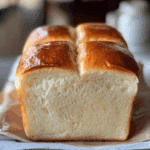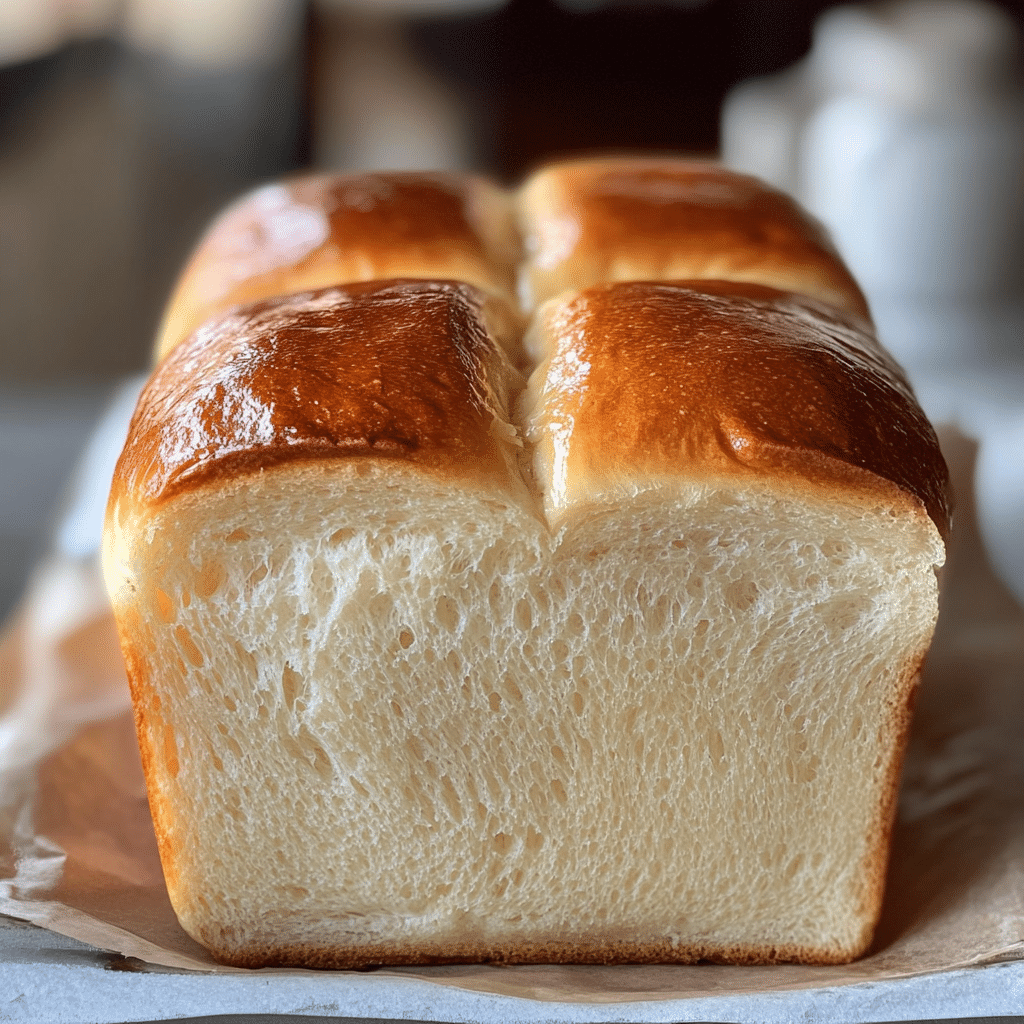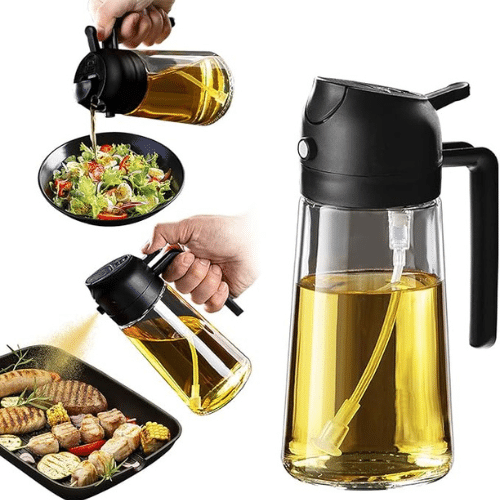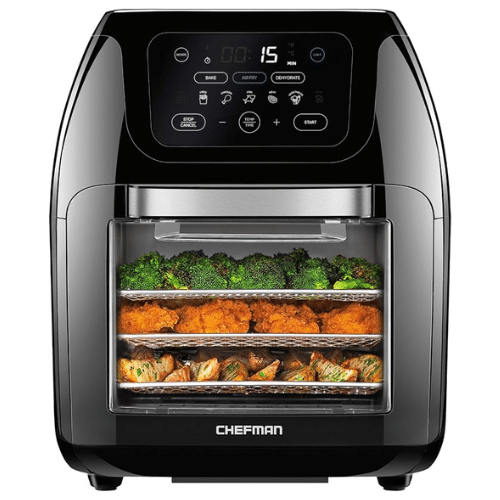If you’re searching for the perfect toast base, look no further than the Milk Bread Loaf. This dreamy, soft, and buttery loaf creates golden, fluffy toast every time you toast a slice. Thanks to its delicate crumb and rich yet gentle sweetness, Milk Bread Loaf transforms an ordinary breakfast into something truly special. Whether you enjoy your toast plain, slathered with butter, or topped with your favorite jam, the texture and flavor of this bread elevate every bite.
Why You’ll Love This Recipe
- Soft and Tender Texture: The milk in this bread makes the crumb incredibly soft and airy, perfect for toast.
- Delicate Sweetness: Just the right hint of sweetness balances beautifully with savory or sweet toppings.
- Golden Crust: It toasts up with a gorgeous golden-brown crust that’s crisp without being hard.
- Light but Filling: This bread holds just enough structure to be satisfying but never heavy.
- Versatile Base: Ideal for sandwiches, French toast, or simply toasted and buttered.
Ingredients You’ll Need
Milk Bread Loaf only requires a handful of simple, everyday ingredients that together create a stuffed-with-flavor masterpiece. Each plays a crucial role, contributing to the bread’s signature softness, richness, and color.
- Milk: Adds moisture and a tender crumb, improving flavor and color.
- All-Purpose Flour: The backbone of the loaf, providing structure and chew.
- Active Dry Yeast: Essential for a light, airy rise.
- Sugar: Fuels fermentation and enhances subtle sweetness.
- Unsalted Butter: Infuses richness and keeps the crumb moist.
- Salt: Balances sweetness and strengthens gluten.
- Egg: Contributes to the bread’s tender texture and golden hue.
Variations for Milk Bread Loaf
One of the best things about Milk Bread Loaf is how easy it is to customize. Whether you’re adjusting for dietary needs or simply craving something new, this recipe adapts beautifully.
- Whole Wheat Twist: Substitute half the flour with whole wheat for a nuttier flavor and extra fiber.
- Dairy-Free Option: Use almond or oat milk in place of cow’s milk for a vegan-friendly loaf.
- Sweet Add-Ins: Toss in raisins, cranberries, or chopped nuts for added texture and flavor.
- Herb Infusion: Mix fresh rosemary or thyme into the dough for an aromatic, savory touch.
- Honey Swap: Replace sugar with honey for a natural sweetness and moist crumb.

Disclosure: This post contains affiliate links.If you click and make a purchase, I may earn a small commission at no extra cost to you.
How to Make Milk Bread Loaf
Step 1: Activate the Yeast
Begin by warming the milk to about body temperature, around 100°F (38°C). Stir in the sugar and yeast, then let it sit for 5 to 10 minutes until it becomes foamy, signaling active yeast ready to work its magic.
Step 2: Prepare the Dough
In a large mixing bowl, combine the flour and salt. Add the activated yeast mixture, beaten egg, and softened butter. Mix until a soft dough forms, then knead for about 10 minutes by hand or 6 minutes in a dough hook mixer until smooth and elastic.
Step 3: First Proofing
Place the dough in a greased bowl, cover with a clean towel, and let it rise in a warm spot for 1 to 1.5 hours until it doubles in size. This step develops flavor and texture.
Step 4: Shape and Second Proof
Punch down the dough gently, then shape it into a loaf by rolling or folding it into your loaf pan. Cover and let it rise again for 45 minutes to 1 hour until it reaches the top of the pan.
Step 5: Bake the Loaf
Preheat your oven to 350°F (175°C). Bake the loaf for 30 to 35 minutes, or until the top turns golden brown and the internal temperature reads about 190°F (88°C). Let it cool slightly before slicing.
Pro Tips for Making Milk Bread Loaf
- Warm Ingredients: Use milk and eggs at room temperature to ensure consistent dough texture.
- Gentle Kneading: Be patient kneading the dough until smooth but avoid overworking it to maintain softness.
- Proper Proofing: Allow dough to rise fully in a warm, draft-free spot for best volume and flavor.
- Butter the Pan: Grease your loaf pan well or line it with parchment to prevent sticking.
- Don’t Skip Cooling: Let the bread cool before slicing to keep the crumb intact and avoid tearing.
How to Serve Milk Bread Loaf
Garnishes
Fresh herbs like thyme, a light spread of creamy butter, or a sprinkle of cinnamon sugar can beautifully complement Milk Bread Loaf toast for simple yet delightful garnishes.
Side Dishes
Pair it with fresh fruit, eggs any style, or a hearty bowl of soup—this bread’s light nature balances richer or more savory dishes perfectly.
Creative Ways to Present
Toast thick slices and top with smashed avocado, radishes, and lemon zest, or create a layered sandwich with smoked salmon and cream cheese for a delicious twist that turns breakfast into an event.
Make Ahead and Storage
Storing Leftovers
Wrap your Milk Bread Loaf tightly with plastic wrap or keep it in an airtight container to maintain freshness for up to 3 days at room temperature.
Freezing
This loaf freezes exceptionally well—slice before freezing for quick individual thawing, and store in a freezer bag for up to 3 months without compromising flavor or texture.
Reheating
Reheat slices in a toaster or oven set at low heat to restore that crispy, golden toast quality. Avoid microwaving as it can make the bread chewy.
FAQs
What makes Milk Bread Loaf different from regular bread?
Milk Bread Loaf includes milk, butter, and eggs, creating a softer, richer crumb and a slightly sweet flavor compared to standard lean breads that use water and minimal fat.
Can I use instant yeast instead of active dry yeast?
Yes, instant yeast can be used—just reduce the proofing time slightly since it activates faster than active dry yeast.
Is Milk Bread Loaf suitable for sandwiches?
Absolutely! Its tender yet sturdy texture makes it an ideal choice for all kinds of sandwiches, from simple PB&J to elaborate layered creations.
How do I know when the bread is fully baked?
The crust should be golden brown, and an internal temperature of about 190°F (88°C) confirms it’s done. You can also tap the bottom—if it sounds hollow, it’s ready.
Can I make this recipe gluten-free?
Making Milk Bread Loaf gluten-free requires alternative flours and binders; while possible, the texture and rise will differ significantly from the traditional version.
Final Thoughts
If you want toast that’s nothing short of spectacular, Milk Bread Loaf is the secret ingredient your kitchen has been missing. Its luxurious softness, light sweetness, and golden crust turn everyday toast into a warm, comforting ritual you’ll look forward to daily. Give this recipe a try, and watch your breakfast game rise to delicious new heights.
Related Posts
- Why Creamy Spinach Mushroom Pasta Is a Must-Try
- 5 Must-Try Street Corn Chicken Rice Bowls Recipes
- Why Garlic Butter Tomato Pasta Steals Dinner

Milk Bread Loaf
- Total Time: 2 hours 35 minutes
- Yield: 1 loaf (about 12 slices) 1x
- Diet: Vegetarian
Description
Milk Bread Loaf is a soft, tender, and buttery loaf with a delicate crumb and gentle sweetness. Perfect for creating golden, fluffy toast, this bread elevates any breakfast with its light yet filling texture and versatile use, from simple toasts to sandwiches and French toast.
Ingredients
Main Ingredients
- 1 cup Milk (warmed to about 100°F / 38°C)
- 3 1/2 cups All-Purpose Flour
- 2 1/4 teaspoons Active Dry Yeast (1 packet)
- 2 tablespoons Sugar
- 2 tablespoons Unsalted Butter (softened)
- 1 teaspoon Salt
- 1 large Egg (beaten)
Instructions
- Activate the Yeast: Warm the milk to about 100°F (38°C). Stir in the sugar and active dry yeast. Let it sit for 5 to 10 minutes until it becomes foamy, indicating the yeast is active.
- Prepare the Dough: In a large mixing bowl, combine the flour and salt. Add the activated yeast mixture, beaten egg, and softened butter. Mix until a soft dough forms, then knead by hand for about 10 minutes or 6 minutes with a dough hook until smooth and elastic.
- First Proofing: Place the dough in a greased bowl, cover with a clean towel, and let it rise in a warm, draft-free spot for 1 to 1.5 hours until it doubles in size.
- Shape and Second Proof: Gently punch down the dough, then shape it into a loaf by rolling or folding it into a greased loaf pan. Cover and let it rise again for 45 minutes to 1 hour until the dough reaches the top of the pan.
- Bake the Loaf: Preheat the oven to 350°F (175°C). Bake for 30 to 35 minutes, or until the top is golden brown and the internal temperature reaches about 190°F (88°C). Allow to cool slightly before slicing.
Notes
- Use milk and eggs at room temperature for consistent dough texture.
- Knead gently and patiently to maintain softness without overworking the dough.
- Proof the dough fully in a warm, draft-free environment for best rise and flavor.
- Grease the loaf pan well or line with parchment paper to prevent sticking.
- Allow the bread to cool before slicing to preserve crumb integrity.
- Prep Time: 2 hours
- Cook Time: 35 minutes
- Category: Breakfast
- Method: Baking
- Cuisine: Japanese-inspired
Nutrition
- Serving Size: 1 slice (about 1/12th of loaf)
- Calories: 120
- Sugar: 3g
- Sodium: 150mg
- Fat: 3g
- Saturated Fat: 2g
- Unsaturated Fat: 1g
- Trans Fat: 0g
- Carbohydrates: 20g
- Fiber: 1g
- Protein: 4g
- Cholesterol: 25mg




